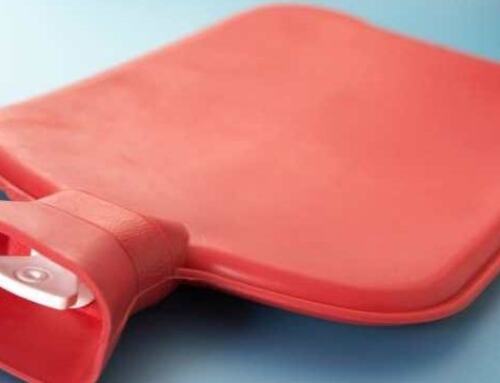9 Ways to Help You Remember
If I told you there was a giant top hat in my kitchen sink, a pot of baby oil brewing in my coffee maker, granite spilling out of my fridge, hay stuffed in my microwave, and Garfield the cat roasting in my oven, you’d likely smile politely, nod, then back away. Very. Slowly.
Don’t worry; I’m not seeing things. All of this stuff is just a mental shortcut. A way to remember the past presidents, specifically POTUSes 16 through 20. (You following? Lincoln is the top hat; Johnson, the baby oil; Grant, granite; Hayes, yep, hay; and President Garfield is the cat.) I learned this little trick while interviewing “memory athletes”—intellectual jocks who have competed in the USA Memory Championship or the World Memory Championships (real events!). In these mental games, masters of the mind go head-to-head in hellish-sounding events like memorizing two decks of cards in five minutes or seeing who can put the most names to faces in the least amount of time.
How to Improve Memory
My learning to rattle off all 45 presidents in under 60 seconds is impressive, but what’s the point, you might ask? It proves what science is telling us: You can better your memory when you put your mind to it. Researchers recently found that when people used strategies from 23 of the world’s most successful memory athletes, the rookies “more than doubled their performance on certain tests, such as memorizing a random list of words, in just six weeks,” says study coauthor Boris Nikolai Konrad, Ph.D., himself a Guinness World Record holder for memorizing 201 faces and names in 15 minutes.
That’s a much-needed revelation, given how our collective memory seems to be failing. One national poll found overstressed, multitasking, tech-reliant millennials are more likely to forget what day it is or where they put their keys than those age 55 and older. No surprise: Blame our reliance on tech devices to store info won’t help us stop forgetting things. One survey by Kaspersky Lab found about half of us can’t call our siblings or close friends without peeping at our contacts list. “If you just enter a new number in your phone, you’re not engaging with the material enough to remember it,” says memory researcher Mariam Aly, Ph.D. “You need to pay attention to something to learn it.”
How to NOT improve your memory
Most of us do the opposite. “We tend to treat our memories like junk drawers, throwing everything in,” says Monica Shirey, a 49-year-old former memory athlete. To store information more efficiently, you have to engage with it by. Perhaps by writing it down or repeating it over and over. Then, “when you need to remember something, you’re not rummaging around, frustrated, saying, ‘I know it’s in here somewhere,'” says Shirey. The same goes for Googling everything the second you can’t remember it. Research from Columbia University shows that people are less likely to recall something when they know they can just look it up later.
Knowing Woodrow Wilson preceded Warren G. Harding won’t necessarily put a full stop to my tendency to forget where I left my keys. But memory is like a muscle: Using it makes it stronger. So give your mind a workout with these unforgettable methods—which all link material to something that’s easy to remember—employed by the world’s champion memorizers.
Try: A Memory Palace
A memory palace, also called the method of loci. (This technique is used by nine out of 10 champs and is how I memorized the POTUSes.) Picture a familiar space, like your home or your childhood bedroom. Mentally move through it. Place the items you want to remember in specific locations, or loci, in visually stimulating, imaginative ways. Say you need to pack toothpaste, allergy meds, a phone charger, and socks for an upcoming trip. You might picture toothpaste pouring out of your mailbox, a giant box of allergy medicine blocking your front door, hundreds of phone chargers blanketing the entryway, and a big stinky sock as the hall rug.
The more bizarre the images, the better, says nine-time memory competitor Sue Jin Yang, 36, of San Francisco, who uses a body-based memory palace when food shopping (think: milk dripping from her hair, cheese in her ears). You could also try this when prepping to give a toast or presentation, says Alex Mullen, the winner of the USA Memory Championship. Distill your speech into key words, then place those words at different loci in your memory palace. During your speech, mentally retrace your steps to unlock each point.
Why it works: “Pictures and locations are inherently more memorable than random words on a list,” says Mullen. And “novel, rich detail gives your memory more to latch on to. So it’s easier to differentiate that information and pull it out of storage,” adds Aly.
Try: Chunking
Divide large numbers into smaller groups of three or four digits. Then assign meaning (the more personal, the better) to each chunk. If your credit card number is 405-911-2012-101, you could tell yourself, “The 405 is a nearby highway, 911 is the emergency telephone number, 2012 is the year my dog was born, and 101 Dalmatians was my favorite movie as a kid”. If the bank sends you a nonsensical password like BK55TH12, you could chunk it into BK 55TH 12, then think of Brooklyn (BK), 55th Street (55TH), and Apt. 12 (12). This will help you stop forgetting things.
Why it works: Most people can store about five arbitrary numbers in their short-term memory, says Aly. Which does not bode well if you want to learn your credit card number by heart so you don’t fumble for your wallet every time you order something online. Chunking increases the amount of info stored in each of those five or so slots. So instead of memorizing four single digits, you’re recalling four groups of four digits.
Try: Graphic imagery
Also called the link method. Say you meet a woman named Alicia at a party. First, create an image in your mind of someone who reminds you of the name (Alicia Keys) or an object that sounds similar (a leash). Now, take notice of the person’s most standout feature—dimples, thick eyebrows, red hair. Picture that image you’ve created interacting with the noteworthy feature. Alicia Keys falling into a cavernous dimple, or a leash looped around the woman’s red ponytail.
Why it works: “Names are usually arbitrary, and faces tend to look very similar,” says Aly. But linking the name to a visual cue helps bind the info together so it more easily jogs your memory. You can also use this method to learn a new language. (The French word for bakery is la boulangerie. To me, –langerie sounds like “lingerie,” so you might construct a mental image of a bakery filled with sexy thongs. Silly? Yes, but it works.)
Try: Mnemonics
You likely already know one common, tongue-twisting version of this memory helper. Isolate the first letter of each item you want to remember, then create an acronym out of those letters (think ROY G BIV for the colors of the rainbow). You can also string them together in an acrostic, where the first letters, taken in order, spell out a phrase (“My Very Educated Mother Just Served Us Nachos” to correctly order the planets).
Why it works: “The first letter acts as a giant hint,” says Shirey. It narrows your memory search and helps you stop forgetting things. Also, as you create your mnemonic, you’re repeating the material you want to remember over and over. As you’re isolating each first letter, you are then rearranging those first letters to create a new word, and repetition is essential to memory. Music is also a mnemonic device—it’s why kids learn their ABCs by singing them. Pick a song you know well and use it to sing whatever you want to remember. By engaging both the auditory and visual centers of your brain, you’re even more likely to lock in the information, says Shirey.
Click here to view original web page at www.womenshealthmag.com







